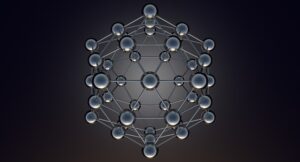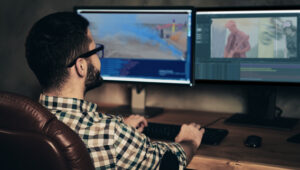The Magic of Motion: Exploring the Fundamentals of 3D Animation Techniques
Welcome to the enchanting world of 3D animation, where every frame tells a story and every movement sparks emotion. In this blog post, we’ll delve into the magic behind the scenes—the fundamental techniques that breathe life into characters and make worlds come alive. Whether you’re a budding animator or someone curious about the intricacies of the craft, join us on this journey into the heart of 3D animation.
1.Understanding Key Animation Principles: The Building Blocks of Movement
- Explore the core animation principles, including squash and stretch, anticipation, timing, and follow-through.
- Discuss how these principles form the foundation for creating realistic and engaging motion
2.The Art of Character Animation: Expressing Emotion Through Movement
- Dive into the nuances of character animation, from conveying emotions through facial expressions to capturing the subtleties of body language.
- Showcase iconic examples of character animation that have left a lasting impact on audiences.
3.Mastering the Rig: The Puppetry of 3D Animation
- Explore the role of rigging in animation and how it enables animators to control and manipulate characters.
- Discuss the importance of a well-designed rig in achieving fluid and expressive character movement.
4.Lip Syncing and Dialogue Animation: Making Words Come to Life
- Examine the challenges and techniques involved in synchronizing character lip movements with dialogue.
- Showcase the artistry behind bringing characters to life through convincing and synchronized speech animation.
5.The Power of Poses: Pose-to-Pose vs. Straight Ahead Animation
- Compare two fundamental animation approaches: pose-to-pose and straight ahead.
- Discuss the strengths and applications of each technique in different scenarios.
6.Cinematic Camera Work: Framing the Action
- Explore the role of the camera in 3D animation and how it contributes to storytelling.
Discuss camera movements, angles, and composition techniques used to enhance visual storytelling.
7.Special Effects and Dynamics: Adding Realism to Animation
- Delve into the world of special effects and dynamics, including particle systems, simulations, and fluid dynamics.
Highlight how these elements contribute to creating realistic and visually stunning animations.
8.Collaboration in Animation: The Team Behind the Magic
- Emphasize the collaborative nature of animation production.
- Explore the roles of animators, modelers, texturers, and other team members in bringing a project to fruition.
As we wrap up our exploration of 3D animation techniques, it’s clear that the Magic of Motion is a delicate dance between creativity and technical skill. Whether you’re shaping the performance of a beloved character or crafting a visually stunning sequence, the techniques discussed here serve as the brushes and colors in the animator’s palette. So, as you embark on your own animation journey, remember that every movement is an opportunity to tell a story, and every frame is a canvas for your imagination to unfold. Happy animating!








